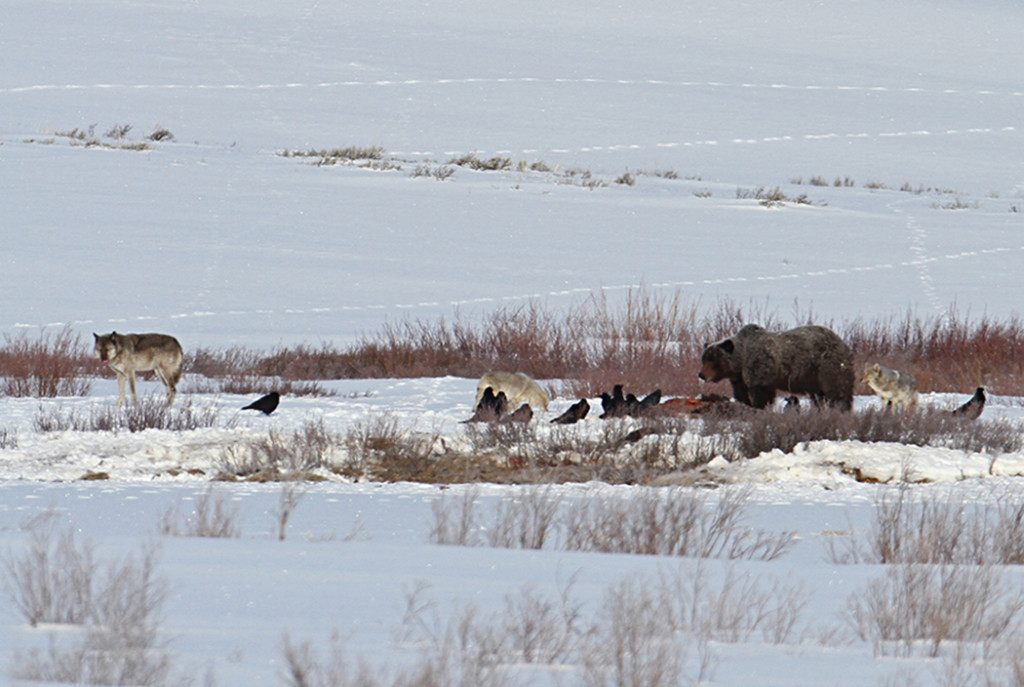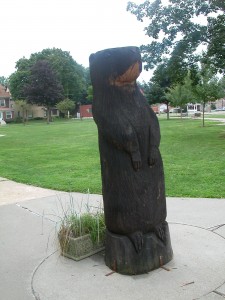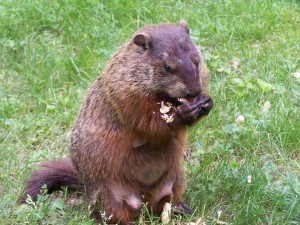
Tag: bear
The Groundhog Powwow
August 24, 2012 Like Santa Claus, the Groundhog is normally celebrated only once a year. I recently drove through a place, however, whose entire claim to fame is the groundhog who bears the town’s name: Punxsutawney Phil. A statue of Phil stands at the center of the town square, and various memorabilia for tourists commemorates the town’s famous resident.Punxsutawney is an unprepossessing village in an economically depressed corner of Pennsylvania — not the kind of place most people would visit unless they were taking part in the annual pilgrimage for the spring oracle. I passed though the place en route to the Lenape powwow, and I had to stop because groundhogs, gophers and prairie dogs are important animals for me, animals that I use in magical healing. I have been ribbed for years about my “gopher medicine” but I adhere to the belief that power should be accepted in the form it comes in.With my meeting with the icon of Phil fresh in my mind, I asked one of the elders why the Lenape had asked the Pennsylvania Department of Conservation not to allow groundhogs to be hunted or harmed on state lands. I was told that the first animals came from inside Mother Earth, and the Groundhog was one of the first creatures to emerge from underground. Thus the Lenape do not hunt groundhogs, and refer to the Groundhog as Grandmother or Grandfather. It seems the German settlers knew the Groundhog was sacred to the Indians when transferring the Candlemas Bear or Hedgehog ritual onto this creature.I also learned last week that “powwow” originally referred to a talented Northeast Native healer named something that sounded like “Powwow.” He attracted large groups wherever he went, and many Whites started calling any Indian gathering a powwow. In some parts of the country the word has retained its association with healing. The Pennsylvania Dutch still refer to their visits to a natural healer as “going to powwow.” So I guess “groundhog powwow” would be another way of saying “gopher witch.”
Like Santa Claus, the Groundhog is normally celebrated only once a year. I recently drove through a place, however, whose entire claim to fame is the groundhog who bears the town’s name: Punxsutawney Phil. A statue of Phil stands at the center of the town square, and various memorabilia for tourists commemorates the town’s famous resident.Punxsutawney is an unprepossessing village in an economically depressed corner of Pennsylvania — not the kind of place most people would visit unless they were taking part in the annual pilgrimage for the spring oracle. I passed though the place en route to the Lenape powwow, and I had to stop because groundhogs, gophers and prairie dogs are important animals for me, animals that I use in magical healing. I have been ribbed for years about my “gopher medicine” but I adhere to the belief that power should be accepted in the form it comes in.With my meeting with the icon of Phil fresh in my mind, I asked one of the elders why the Lenape had asked the Pennsylvania Department of Conservation not to allow groundhogs to be hunted or harmed on state lands. I was told that the first animals came from inside Mother Earth, and the Groundhog was one of the first creatures to emerge from underground. Thus the Lenape do not hunt groundhogs, and refer to the Groundhog as Grandmother or Grandfather. It seems the German settlers knew the Groundhog was sacred to the Indians when transferring the Candlemas Bear or Hedgehog ritual onto this creature.I also learned last week that “powwow” originally referred to a talented Northeast Native healer named something that sounded like “Powwow.” He attracted large groups wherever he went, and many Whites started calling any Indian gathering a powwow. In some parts of the country the word has retained its association with healing. The Pennsylvania Dutch still refer to their visits to a natural healer as “going to powwow.” So I guess “groundhog powwow” would be another way of saying “gopher witch.”
Groundhog Day: An American Pagan Holiday
January 27, 2012
